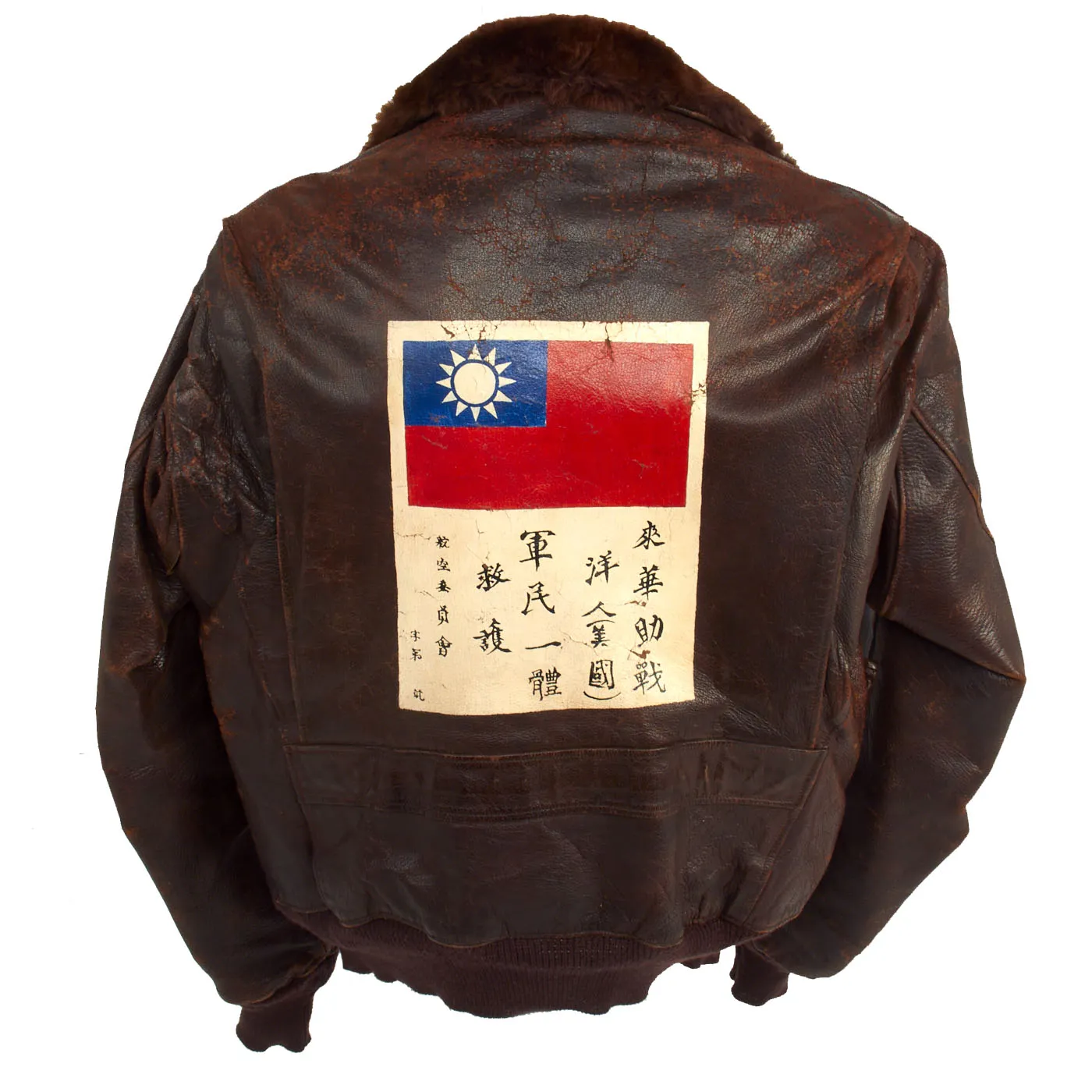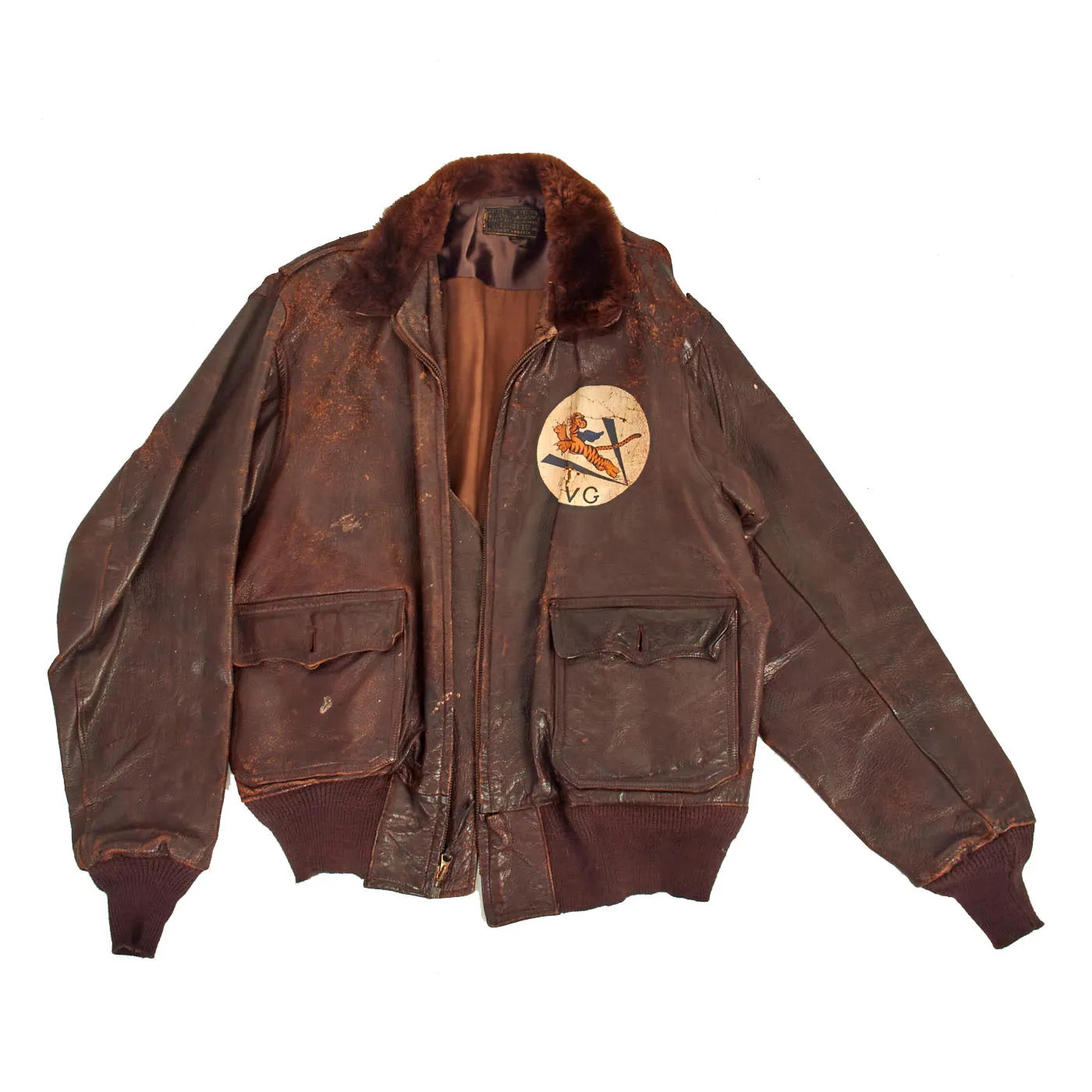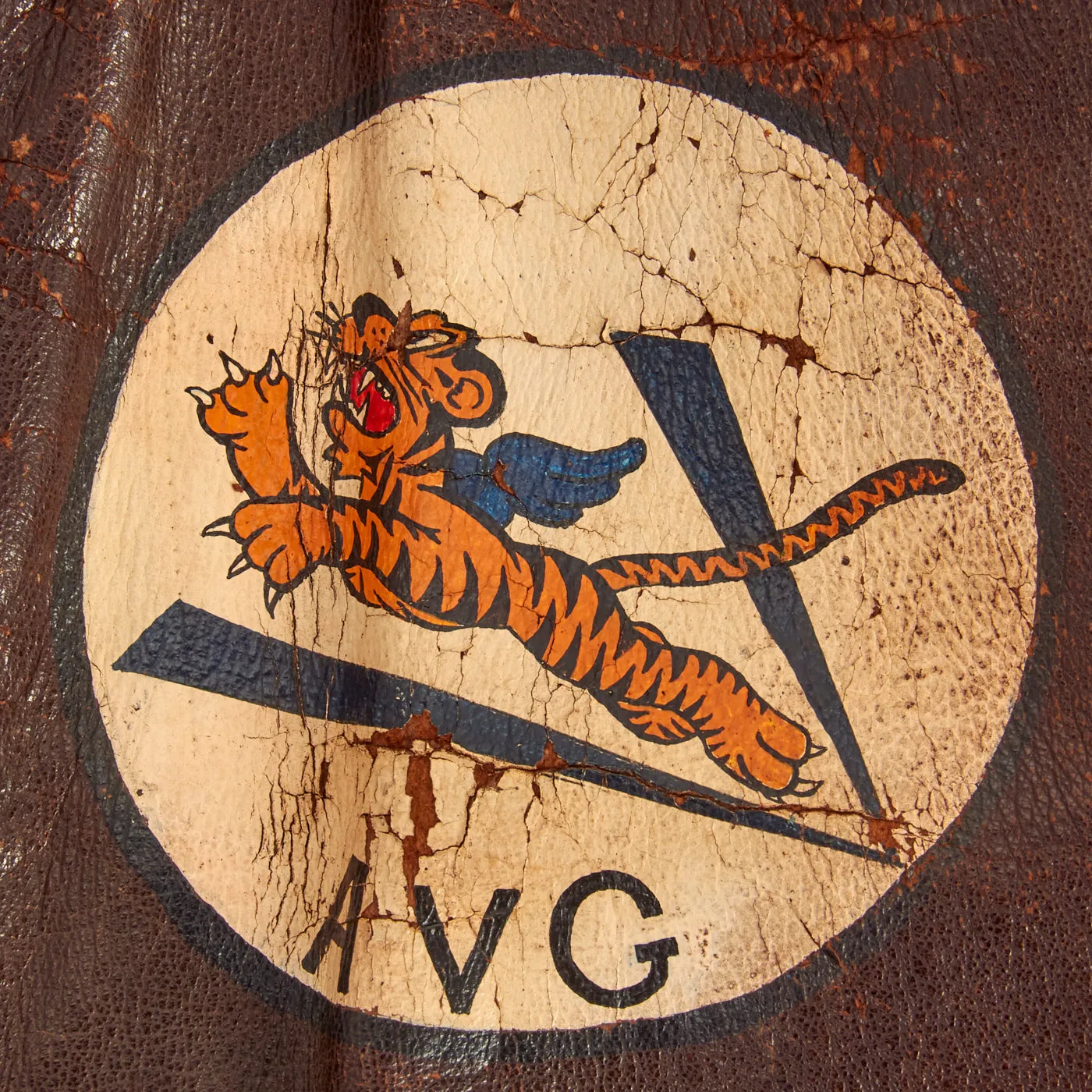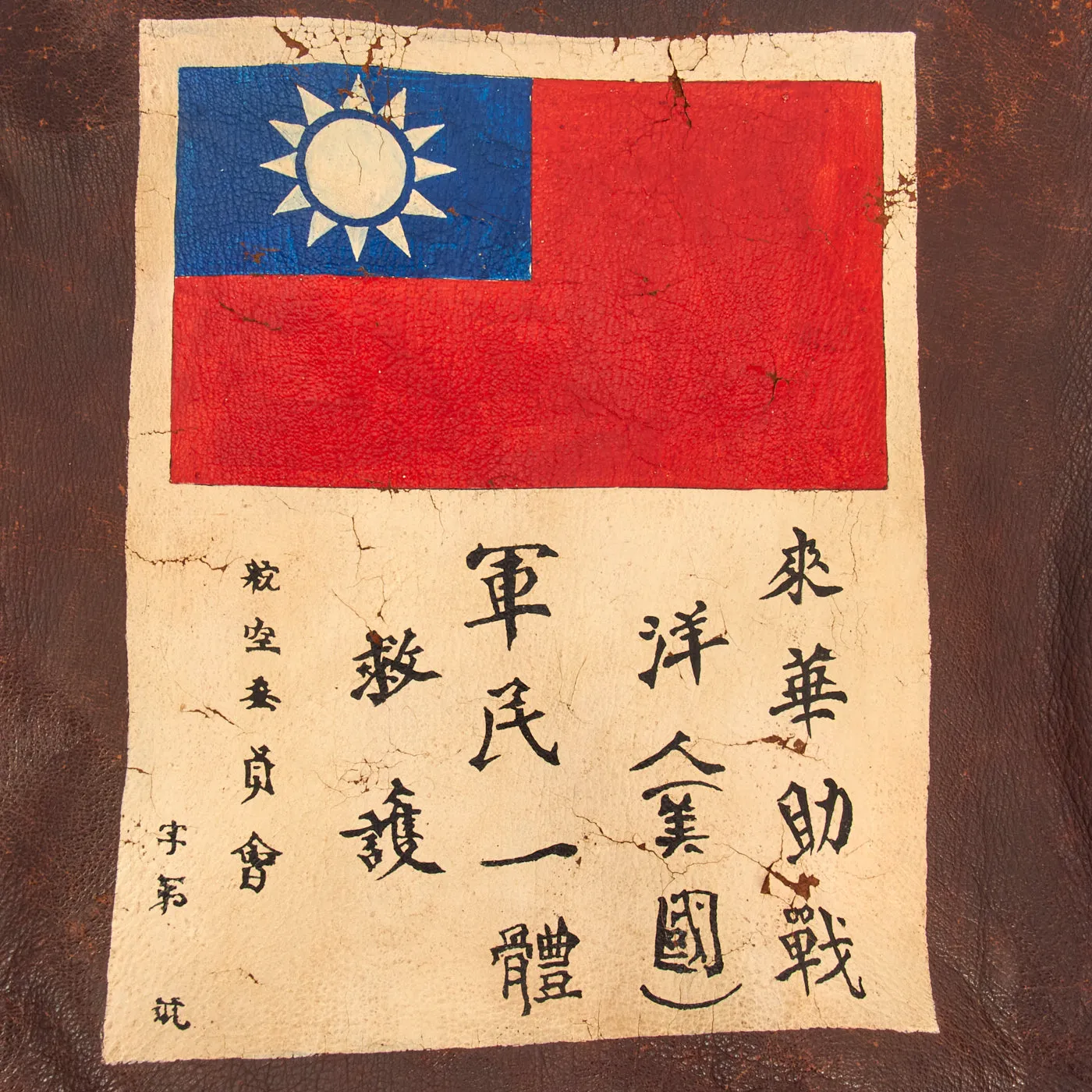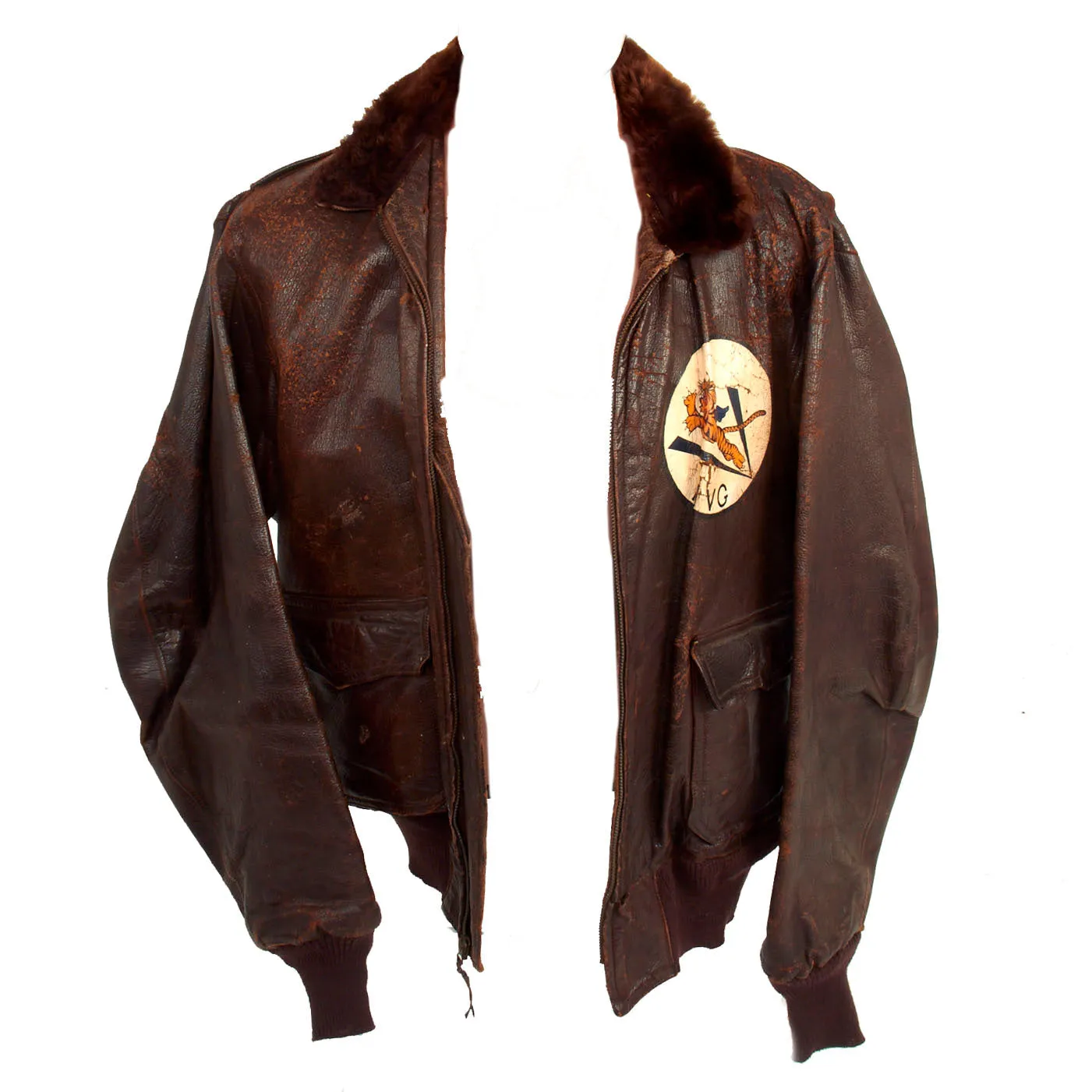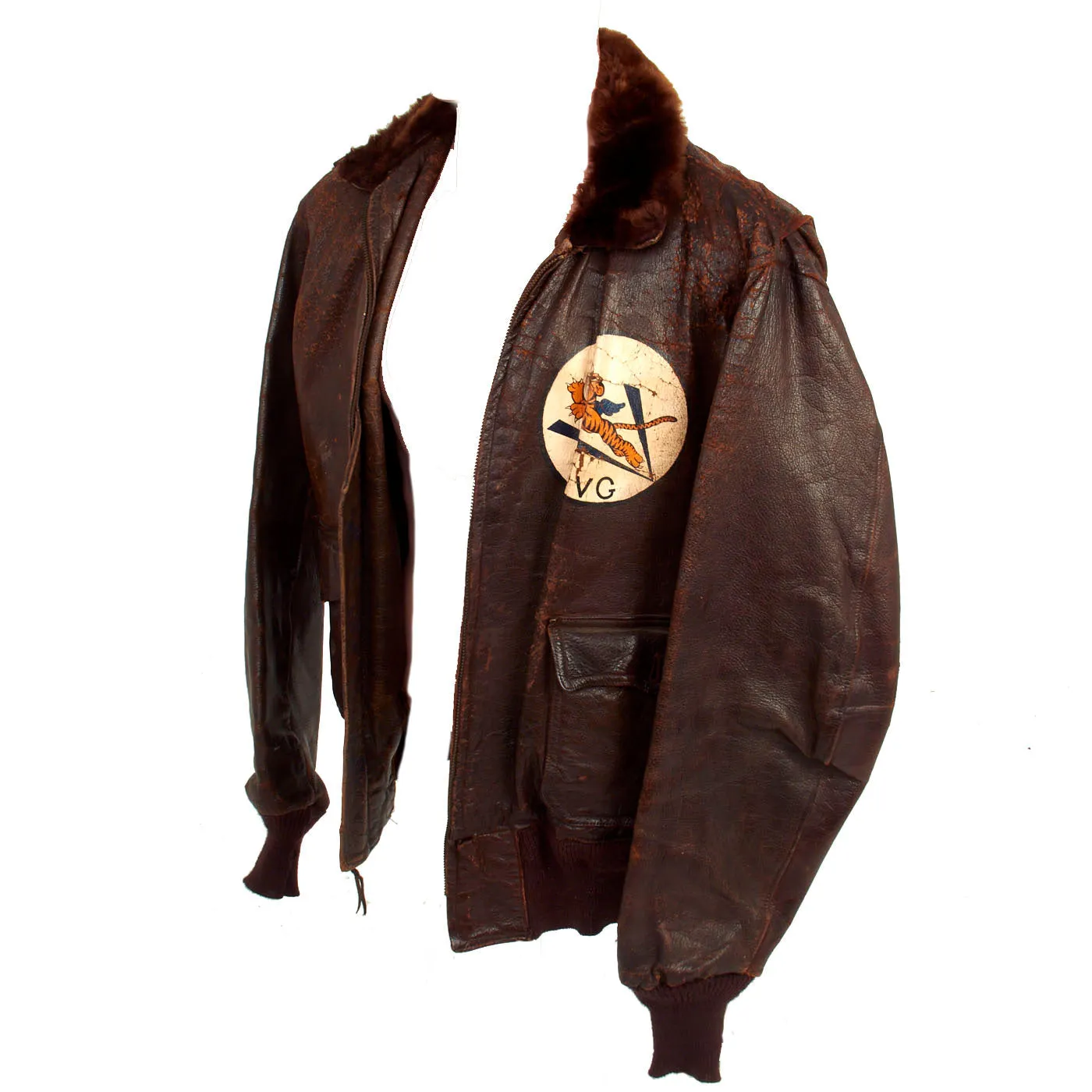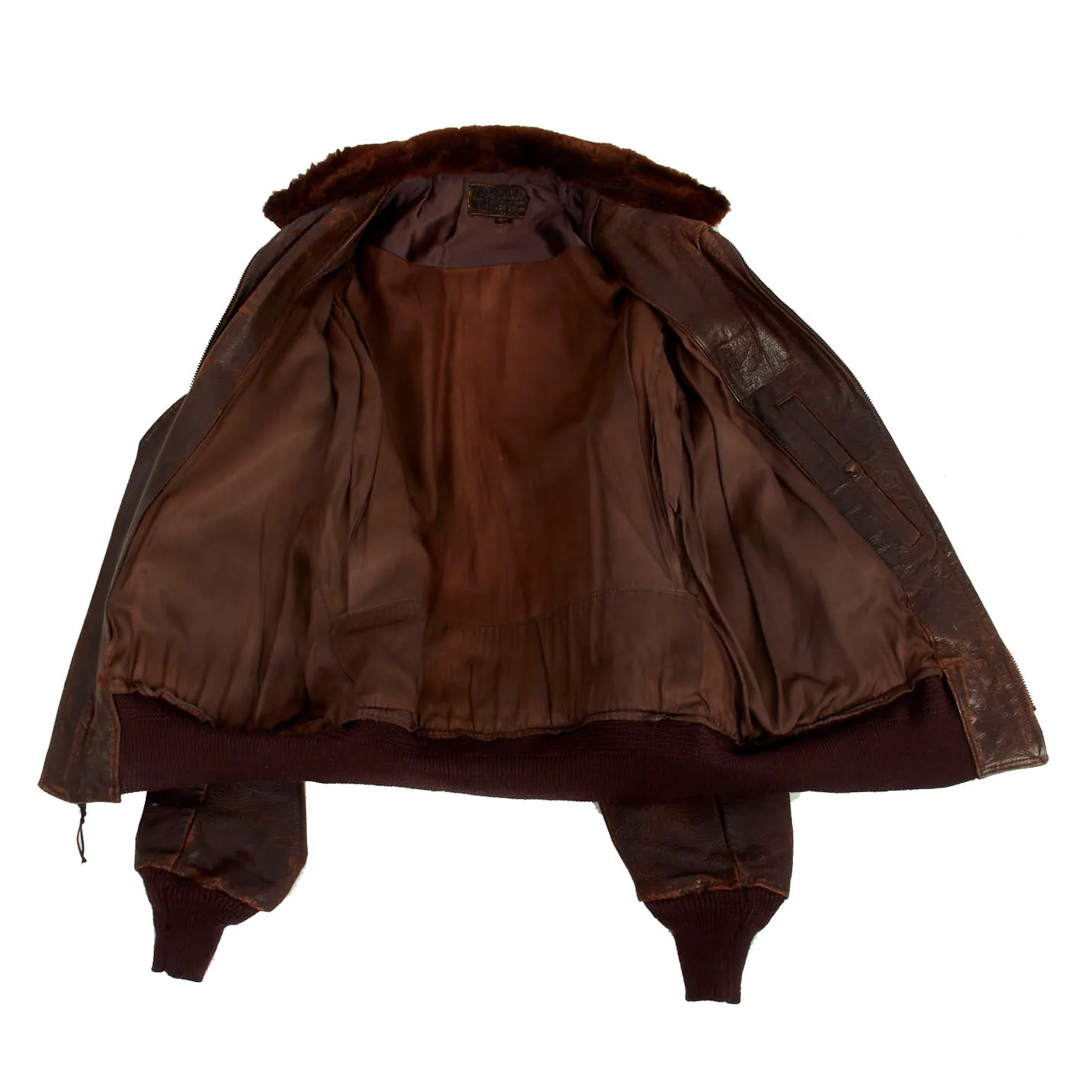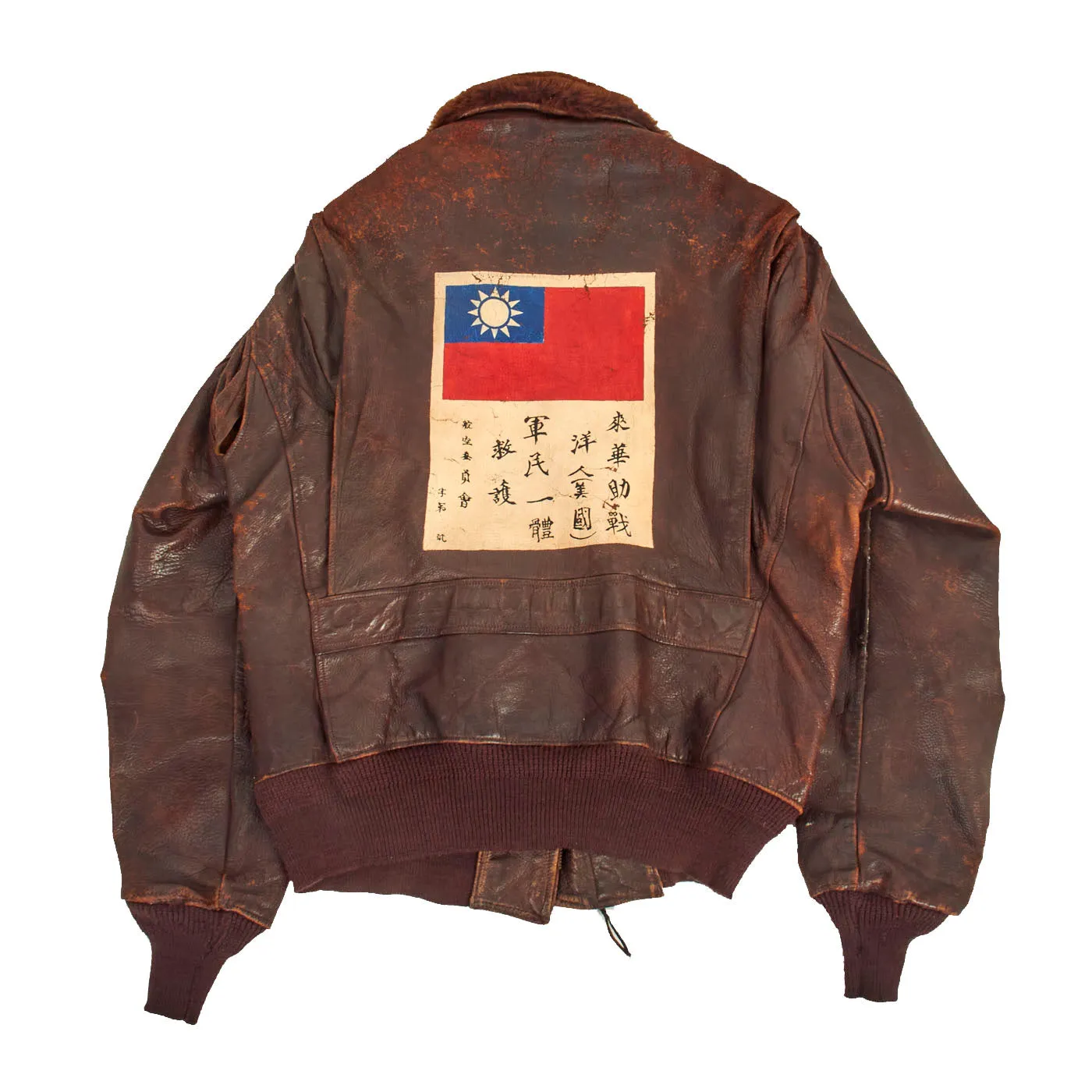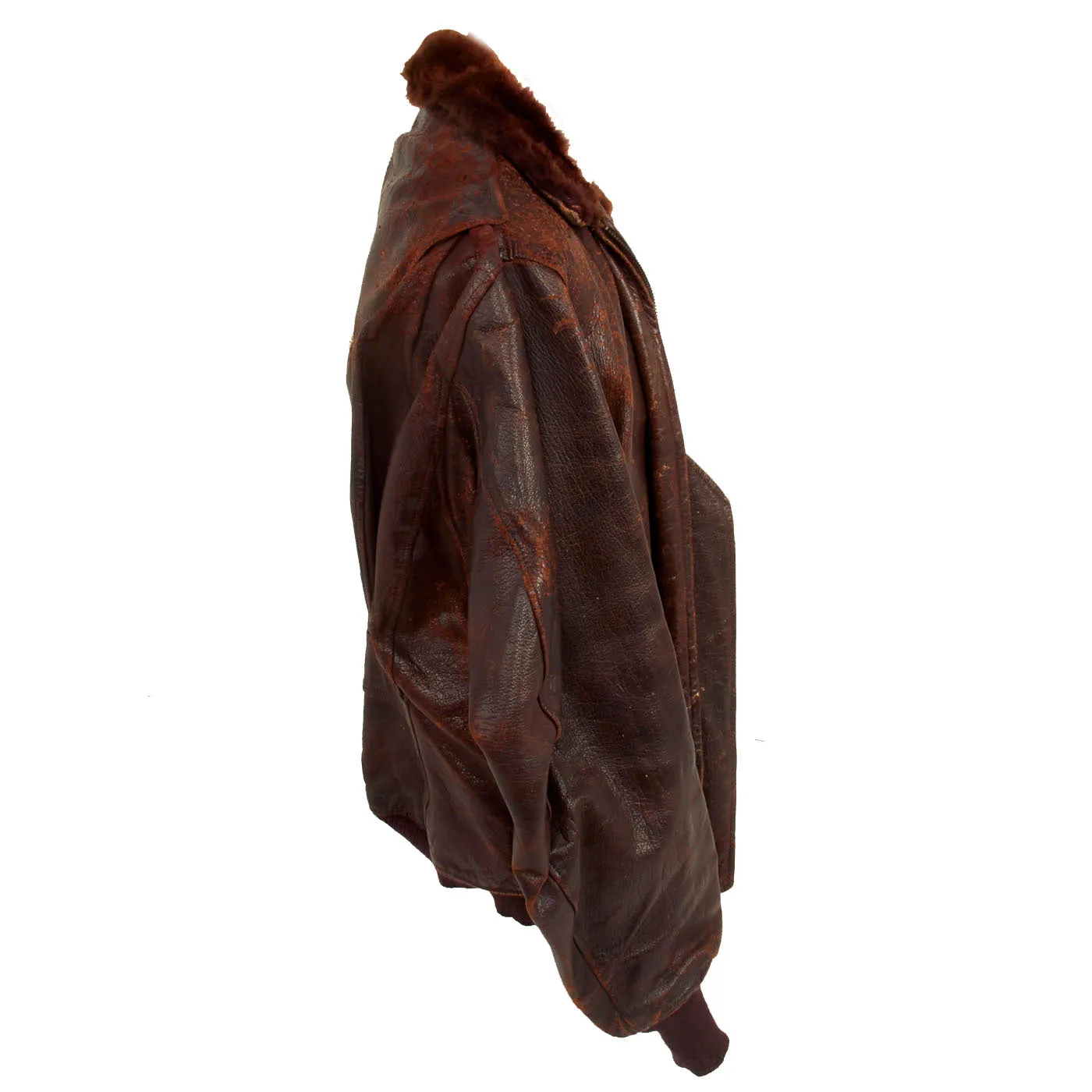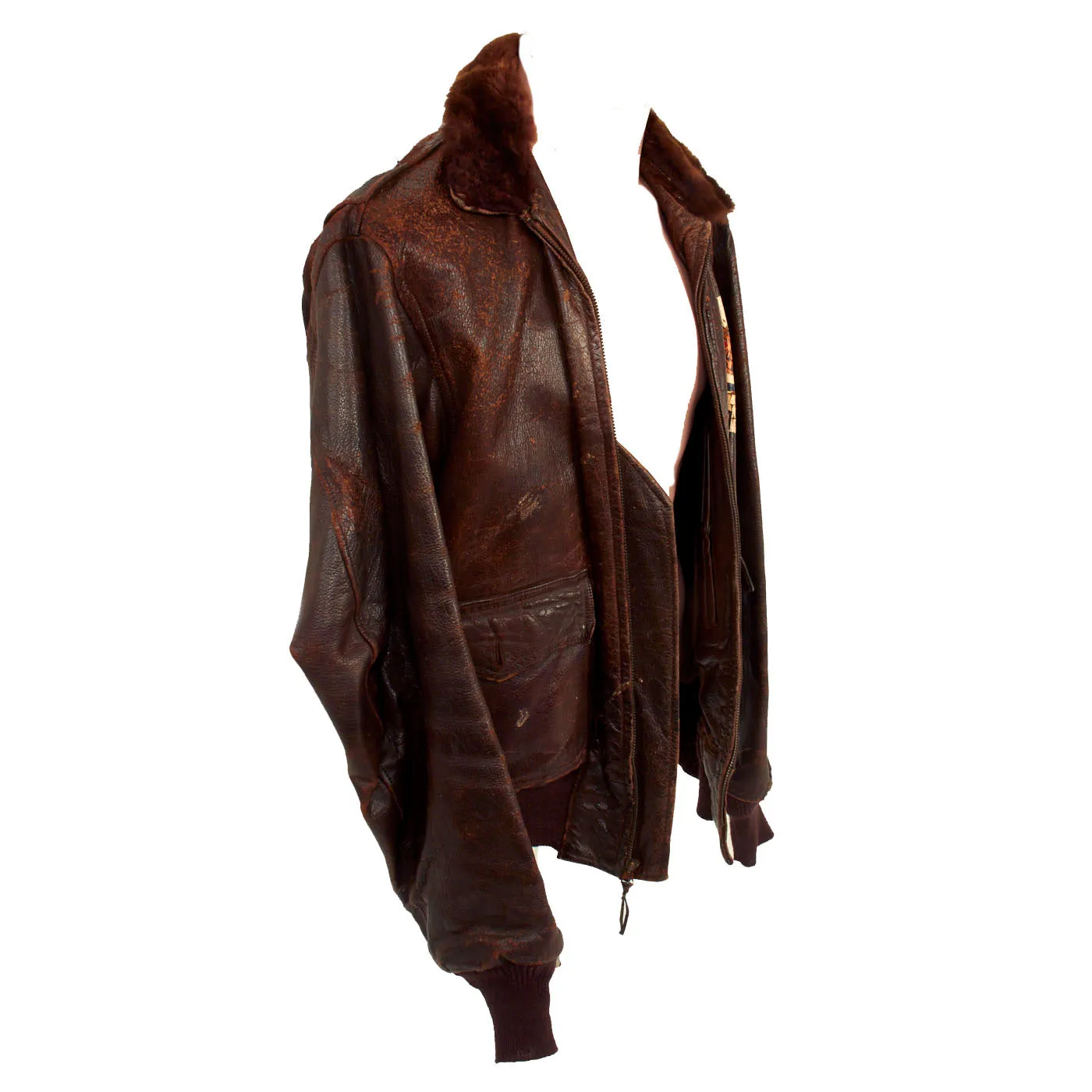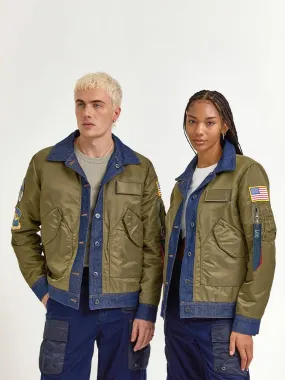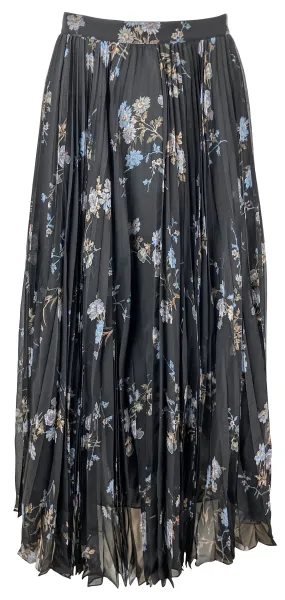Original Item: Only One Available. The "G-1" military flight jacket is the commonly accepted name for the fur-lined-collar World War II-era flight jacket of the United States Navy, Marine Corps, and Coast Guard. The G-1 remains a current uniform-issue item in naval aviation for officer and enlisted aviation personnel on flying status in the U.S. Navy, U.S. Marine Corps and U.S. Coast Guard (i.e., Naval Aviator, Naval Flight Officer, Naval Flight Surgeon, Naval Aircrewman, etc.) and is arguably best known as the leather flight jacket as worn by Tom Cruise in the film Top Gun.
This is a fantastic WWII USN G-1 flight jacket with custom hand painted art, done post war. Brown leather goatskin jacket with brown shearling collar and brown lining/ brown knit cuffs and waistband/ two flap, patch pockets on the front with buttons. The jacket is in a well used and worn condition with an illegible data tag.
The artwork featured on the front is an AVG “Flying Tiger” with wings on a white background. The reverse side is the started Blood Chit, which was often painted on or had cloth and leather examples stitched on the reverse or inside lining.
Truly a beautiful example that comes more than ready for display!
Approximate Measurements
Collar to shoulder: 10.5”
Shoulder to sleeve: 23”
Shoulder to shoulder: 17”
Chest width: 23"
Waist width: 22”
Hip width: 18.5”
Front length: 29"
The First American Volunteer Group (AVG) of the Republic of China Air Force, nicknamed the Flying Tigers, was formed to help oppose the Japanese invasion of China. Operating in 1941–1942, it was composed of pilots from the United States Army Air Corps (USAAC), Navy (USN), and Marine Corps (USMC), and was commanded by Claire Lee Chennault. Their Curtis P-40B Warhawk aircraft, marked with Chinese colors, flew under American control. Recruited under President Franklin Roosevelt's authority before Pearl Harbor, their mission was to bomb Japan and defend the Republic of China, but many delays meant the AVG first flew in combat after the US and Japan declared war.
The group consisted of three fighter squadrons of around 30 aircraft each that trained in Burma before the American entry into World War II to defend the Republic of China against Japanese forces. The AVG were officially members of the Republic of China Air Force. The group had contracts with salaries ranging from $250 a month for a mechanic to $750 for a squadron commander, roughly three times what they had been making in the U.S. forces. While it accepted some civilian volunteers for its headquarters and ground crew, the AVG recruited most of its staff from the U.S. military.
The Flying Tigers began to arrive in China in April 1941. The group first saw combat on 20 December 1941, 12 days after Pearl Harbor (local time). It demonstrated innovative tactical victories when the news in the U.S. was filled with little more than stories of defeat at the hands of the Japanese forces, and achieved such notable success during the lowest period of the war for both the U.S. and the Allied Forces, as to give hope to America that it might eventually defeat Japan. AVG pilots earned official credit and received combat bonuses for destroying 296 enemy aircraft, while losing only 14 pilots in combat. The combat records of the AVG still exist and researchers have found them credible. On 4 July 1942 the AVG was disbanded and replaced by the 23rd Fighter Group of the United States Army Air Forces, which was later absorbed into the U.S. Fourteenth Air Force with General Chennault as commander. The 23rd FG went on to achieve similar combat success, while retaining the nose art on the left-over P-40s.




